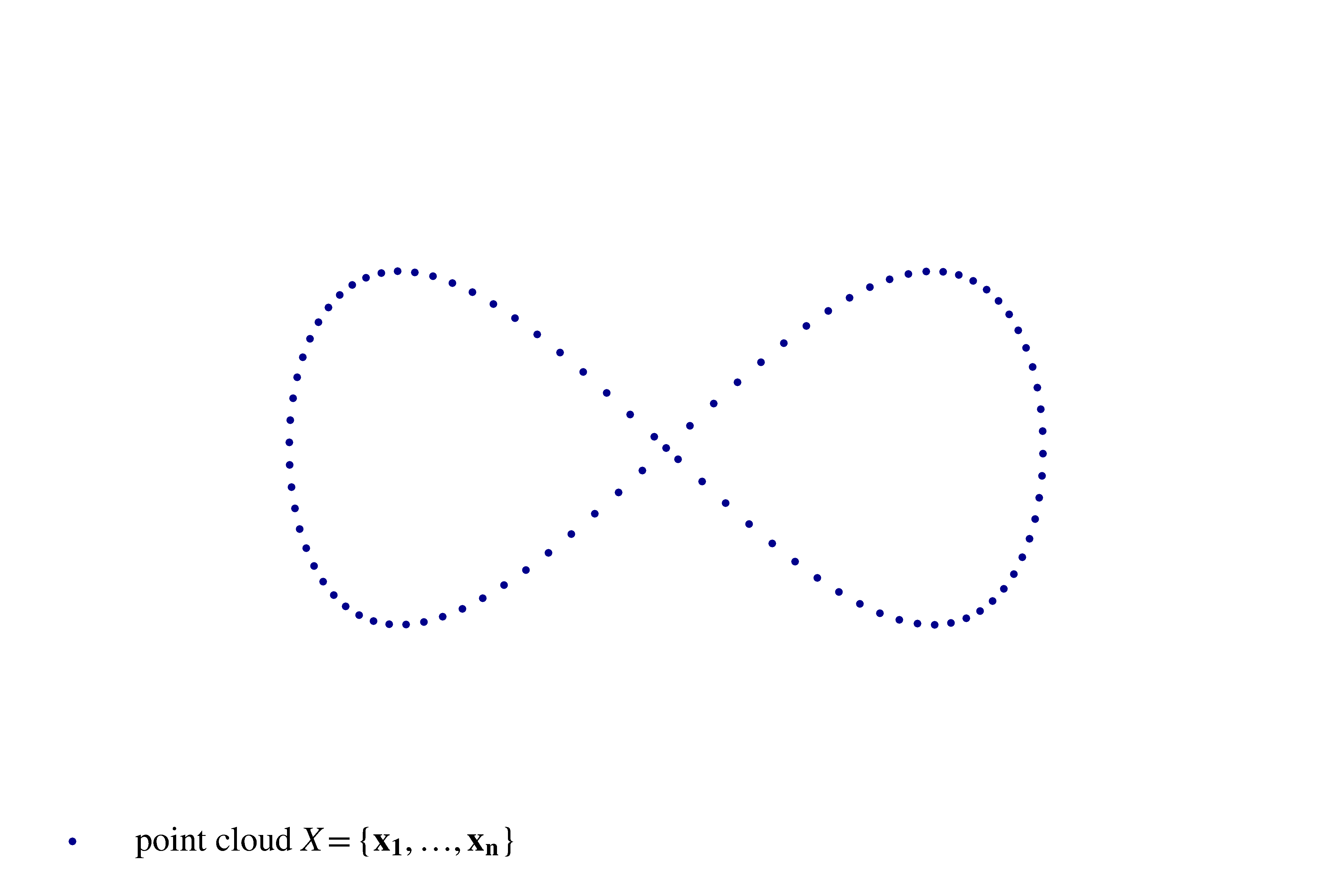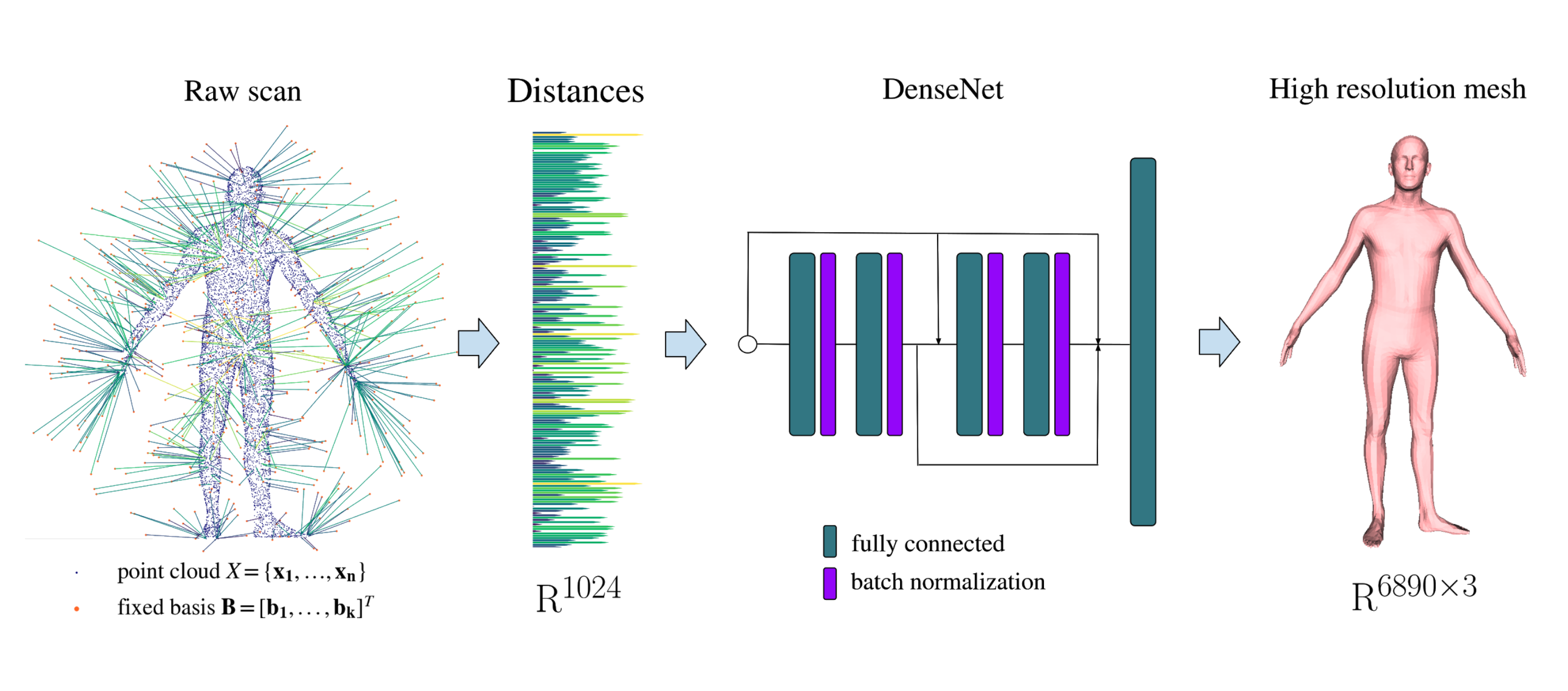Basis Point Set (BPS) is a simple and efficient method for encoding 3D point clouds into fixed-length representations.
It is based on a simple idea: select k fixed points in space and compute vectors from these basis points to the nearest points in a point cloud; use these vectors (or simply their norms) as features:
The basis points are kept fixed for all the point clouds in the dataset, providing a fixed representation of every point cloud as a vector. This representation can then be used as input to arbitrary machine learning methods, in particular it can be used as input to off-the-shelf neural networks.
Below is the example of a simple model using BPS features as input for the task of mesh registration over a noisy scan:
FAQ: what are the key differences between standard occupancy voxels, TSDF and the proposed BPS representation?
- continuous global vectors instead of simple binary flags or local distances in the cells;
- smaller number of cells required to represent shape accurately;
- BPS cell arrangement could be different from a standard rectangular grid, allowing different types of convolutions;
- significant improvement in performance: simply substituting occupancy voxels with BPS directional vectors results in a +9% accuracy improvement of a VoxNet-like 3D-convolutional network on a ModelNet40 classification challenge.
Check our ICCV 2019 paper for more details.
- Python >= 3.7;
- scikit-learn >= 0.21;
- tqdm >= 4.3;
- PyTorch >= 1.3 (for running provided demos)
pip3 install git+https://github.com/sergeyprokudin/bps
Converting point clouds to BPS representation takes few lines of code:
import numpy as np
from bps import bps
# batch of 100 point clouds to convert
x = np.random.normal(size=[100, 2048, 3])
# optional point cloud normalization to fit a unit sphere
x_norm = bps.normalize(x)
# option 1: encode with 1024 random basis and distances as features
x_bps_random = bps.encode(x_norm, bps_arrangement='random', n_bps_points=1024, bps_cell_type='dists')
# option 2: encode with 32^3 grid basis and full vectors to nearest points as features
x_bps_grid = bps.encode(x_norm, bps_arrangement='grid', n_bps_points=32**3, bps_cell_type='deltas')
# the following tensor can be provided as input to any Conv3D network:
x_bps_grid = x_bps_grid.reshape([-1, 32, 32, 32, 3])
Clone the repository and install the dependencies:
git clone https://github.com/sergeyprokudin/bps
cd bps
python setup.py install
pip3 install torch h5py
Check one of the provided examples:
- ModelNet40 3D shape classification with BPS-MLP (~89% accuracy, ~30 minutes of training on a non-GPU MacBook Pro, ~3 minutes of training on Nvidia V100 16gb):
python bps_demos/train_modelnet_mlp.py
- ModelNet40 3D shape classification with BPS-Conv3D (~92% accuracy, ~120 minutes of training on Nvidia V100 16gb):
python bps_demos/train_modelnet_conv3d.py
- Human body mesh registration: coming soon.
If you find our work useful in your research, please consider citing:
@inproceedings{prokudin2019efficient,
title={Efficient Learning on Point Clouds With Basis Point Sets},
author={Prokudin, Sergey and Lassner, Christoph and Romero, Javier},
booktitle={Proceedings of the IEEE International Conference on Computer Vision},
pages={4332--4341},
year={2019}
}
This library is licensed under the MIT-0 License. See the LICENSE file.
Note: this is the official fork of the Amazon repository written by the same author during the time of internship. Latest features and bug fixes are likely to appear here first.

